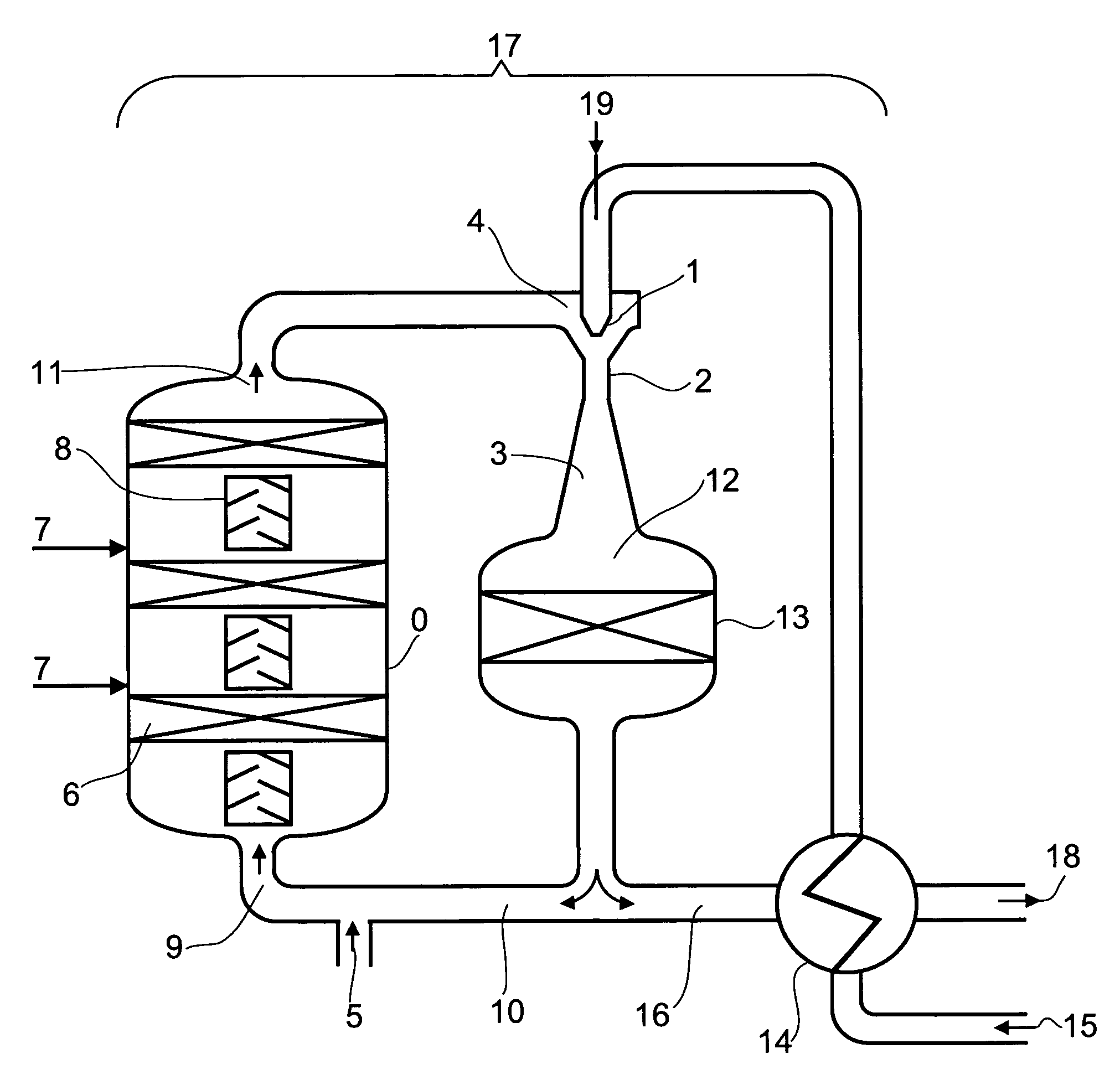Preparation of acrolein or acrylic acid or a mixture thereof from propane
- Summary
- Abstract
- Description
- Claims
- Application Information
AI Technical Summary
Benefits of technology
Problems solved by technology
Method used
Image
Examples
example 1
[0745]The procedure of Comparative Example 1 was repeated. However, the (overall) residual gas was not conducted into the evaporator upstream of the first heater, but rather, compressed to the appropriate pressure together with the 195 l (STP) / h of compressed air, into the heater upstream of the third dehydrogenation reactor.
[0746]The CO2 content of the reaction gas mixture leaving the third dehydrogenation reactor subsequently fell from 3.25% by volume to 1.6% by volume.
[0747]This demonstrates that the inventive procedure is associated with a full combustion of the C3 hydrocarbons involved reduced to less than half.
[0748]In addition, it was possible to operate this inventive procedure over a period of 7500 operating hours substantially without significant impairments.
example 2
[0749]Here too, the steady operating state is described.
[0750]A shaft furnace reactor which is designed as a tray reactor and configured adiabatically has, as a first section of a reaction zone A, two catalyst beds arranged in series in flow direction, each of which is charged as a fixed bed with a dehydrogenation catalyst according to Comparative Example 1. Upstream of each fixed bed is disposed a static gas mixer.
[0751]To the first catalyst bed in flow direction is fed a starting reaction gas mixture which has the following composition:[0752]a) recycled product gas mixture A which has a temperature of 617° C. and a pressure of 2.75 bar in an amount of 132 872 m3 (STP) / h, containing[0753]26.4% by volume of propane,[0754]6.6% by volume of propene (propylene),[0755]0.1% by volume of H2,[0756]8.8% by volume of H2O and[0757]0% by volume of O2 and[0758]b) 8758 m3 (STP) / h of crude propane according to Comparative Example 1.
[0759]The temperature of the crude propane is such that the tempe...
example 3
[0807]Here too, the steady operating state is described.
[0808]A shaft furnace reactor which is designed as a tray reactor and configured adiabatically has, as a first section of a reaction zone A, two catalyst beds arranged in series in flow direction, each of which is charged as a fixed bed with a dehydrogenation catalyst according to Comparative Example 1. Upstream of each fixed bed is disposed a static gas mixer.
[0809]To the first catalyst bed in flow direction is fed a starting reaction gas mixture which has the following composition:[0810]a) recycled product gas mixture A which has a temperature of 676° C. and a pressure of 1.75 bar in an amount of 106 510 m3 (STP) / h, containing[0811]12.3% by volume of propane,[0812]8.2% by volume of propene (propylene),[0813]2.2% by volume of H2,[0814]7.7% by volume of H2O and[0815]0% by volume of O2 and[0816]b) 8758 m3 (STP) / h of crude propane according to Comparative Example 1.
[0817]The temperature of the crude propane is such that the tempe...
PUM
| Property | Measurement | Unit |
|---|---|---|
| Angle | aaaaa | aaaaa |
| Percent by mass | aaaaa | aaaaa |
| Percent by mass | aaaaa | aaaaa |
Abstract
Description
Claims
Application Information
 Login to View More
Login to View More - R&D Engineer
- R&D Manager
- IP Professional
- Industry Leading Data Capabilities
- Powerful AI technology
- Patent DNA Extraction
Browse by: Latest US Patents, China's latest patents, Technical Efficacy Thesaurus, Application Domain, Technology Topic, Popular Technical Reports.
© 2024 PatSnap. All rights reserved.Legal|Privacy policy|Modern Slavery Act Transparency Statement|Sitemap|About US| Contact US: help@patsnap.com










